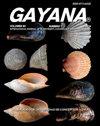Conservación en la ciudad: ¿Cómo influye la estructura del hábitat sobre la abundancia de especies de aves en una metrópoli latinoamericana?
IF 0.2
4区 生物学
Q4 ZOOLOGY
引用次数: 12
Abstract
A paucity of ecological research in urban ecosystems in Latin America limits the management of urban areas for biodiversity conservation. In addition, the majority of previous ecological studies in cities have focused on parks, ignoring most part of urban ecosystems. To provide robust scientific evidence for the management of urban areas for bird conservation, we investigate the influence of habitat variables on the abundance of native and exotic bird species in Santiago, Chile. During the reproductive season of 2017-2018, we surveyed birds and habitat variables at 455 points distributed throughout the city. We fit generalized linear models to evaluate the influence of habitat variables on individual bird species abundance. In 905 bird counts, we recorded 35 bird species (31 native and 4 exotic). The abundance of native birds (Zenaida auriculata, Elaenia albiceps, Troglodytes aedon, Turdus falcklandii, Zonotrichia capensis and Molothrus bonariensis) increased with woody vegetation cover. Points with greater shrub cover in the microhabitat exhibited a greater abundance of T. falcklandii, Z. capensis and E. albiceps. In contrast to the response of native birds, the abundance of exotic species (Columba livia and Passer domesticus) decreased with vegetation cover. Our results demonstrate the importance of woody vegetation to conserve native bird species in Santiago. Management of habitat that (1) avoids the loss of woody vegetation and (2) aims to increase trees and shrubs in urban areas with low vegetation cover will promote a greater abundance of native birds.城市保护:在拉丁美洲大都市,栖息地结构如何影响鸟类物种的丰度?
拉丁美洲城市生态系统的生态学研究匮乏,限制了对城市地区进行生物多样性保护的管理。此外,以往大多数城市生态学研究都集中在公园上,忽略了城市生态系统的大部分。为了为城市地区鸟类保护管理提供有力的科学证据,我们调查了栖息地变量对智利圣地亚哥本地和外来鸟类物种丰度的影响。在2017-2018年的繁殖季节,我们调查了分布在全市455个点的鸟类和栖息地变量。我们拟合广义线性模型来评估栖息地变量对单个鸟类物种丰度的影响。在905只鸟类中,我们记录了35种鸟类(31种为本地鸟类,4种为外来鸟类)。随着木本植被的覆盖,本地鸟类(耳泽奈达(Zenaida aurculata)、白唇埃兰(Elaenia albiceps。微生境中灌木覆盖率较高的点表现出更丰富的T.falcklandii、Z.capensis和E.albiceps。与本地鸟类的反应相反,外来物种(Columba livia和Passer domesticus)的数量随着植被的覆盖而减少。我们的研究结果证明了木本植被对保护圣地亚哥本地鸟类的重要性。栖息地的管理(1)避免木本植被的损失,(2)旨在增加植被覆盖率低的城市地区的树木和灌木,这将促进本地鸟类的更丰富。
本文章由计算机程序翻译,如有差异,请以英文原文为准。
求助全文
约1分钟内获得全文
求助全文
来源期刊

GAYANA
Agricultural and Biological Sciences-Aquatic Science
CiteScore
0.60
自引率
0.00%
发文量
5
期刊介绍:
GAYANA is a scientific journal published by Universidad de Concepción, Chile. It is the modern version of Gayana Oceanología and Gayana Zoología. Therefore its numeration starts at volume 63(1).
GAYANA covers all aspects of zoology and oceanographic research. It is structured in five sections, defined by subject or discipline: Ecology, Biodiversity and Taxonomy, Earth Sciences, Evolutionary, and Applied Biology and Environmental Biology. Each section is in charge of an editor who receives and manages the manuscripts sent for evaluation in close collaboration with the editorial board.
 求助内容:
求助内容: 应助结果提醒方式:
应助结果提醒方式:


